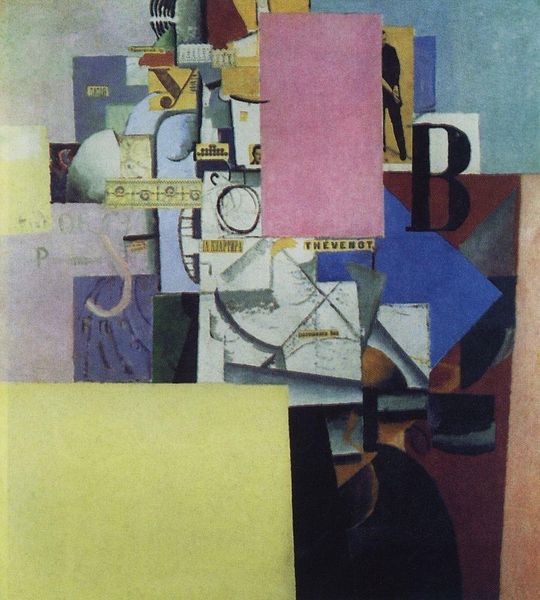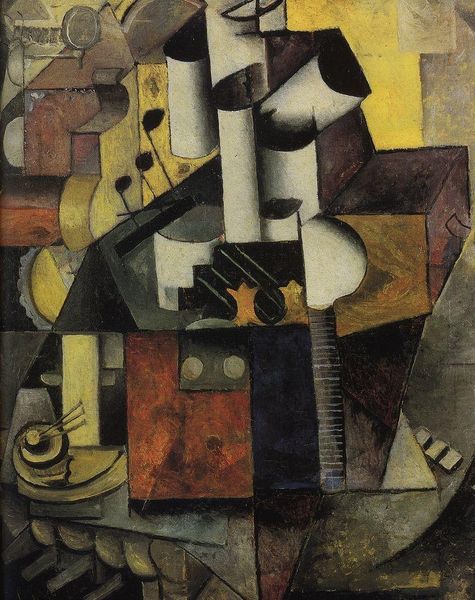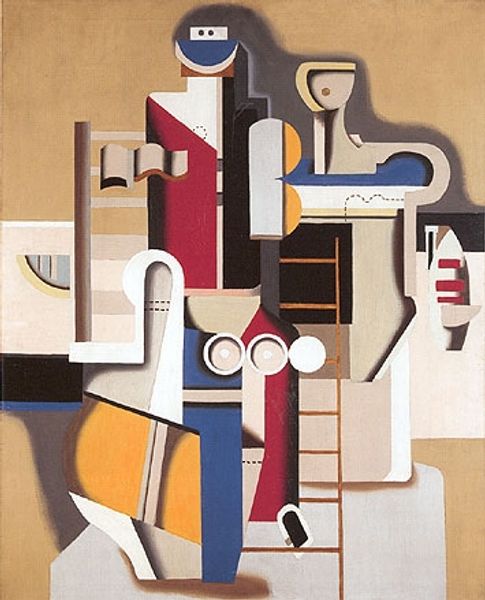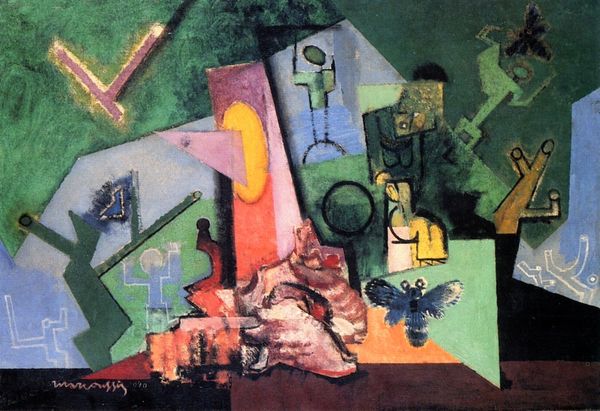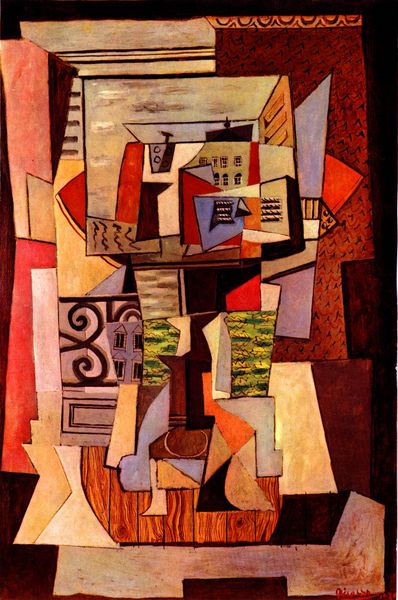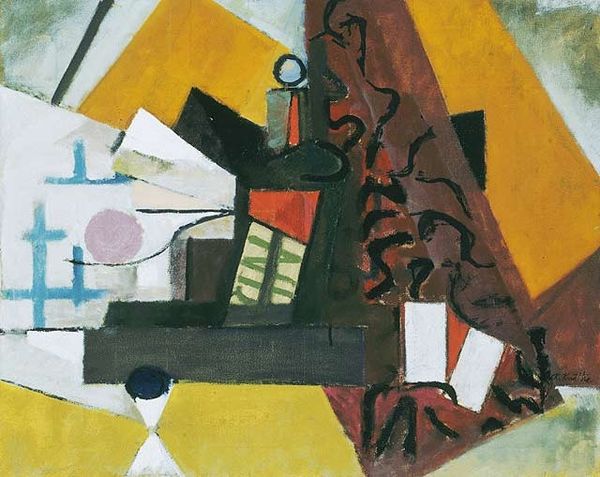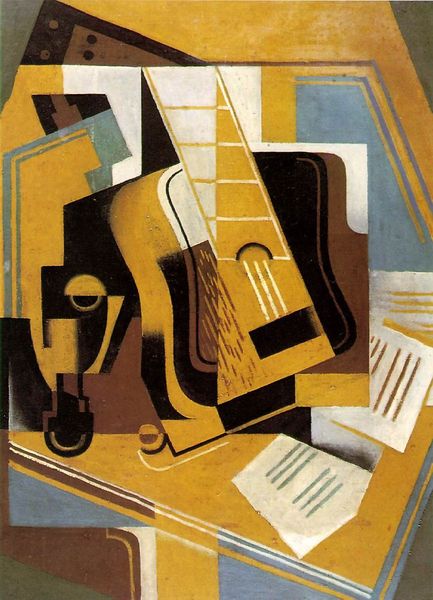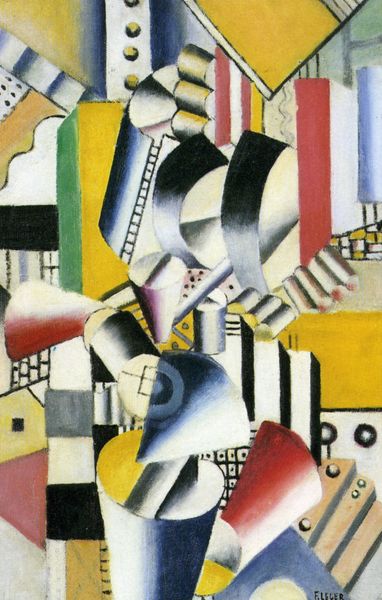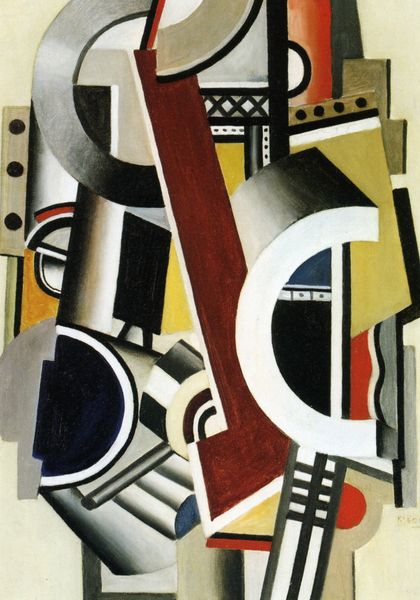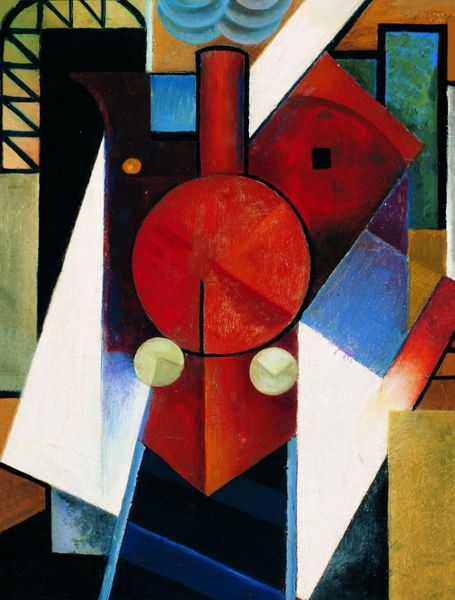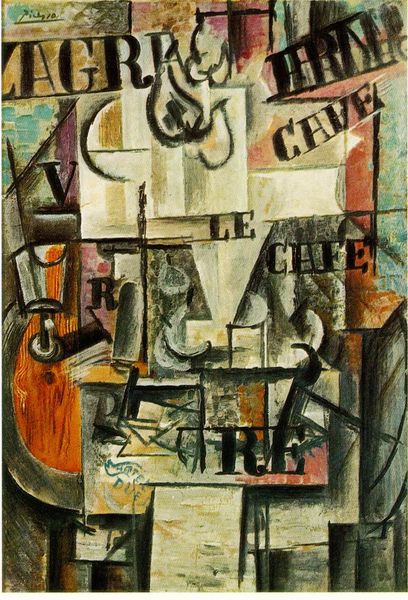
collage, painting, oil-paint
#
cubism
#
collage
#
painting
#
oil-paint
#
oil painting
#
geometric
#
abstraction
#
futurism
Copyright: Public domain
Editor: Here we have Kazimir Malevich's "Soldier of the First Division," created in 1914, using oil paint and collage. It strikes me as… chaotic, yet contained. So many geometric forms crammed into one space. What’s your read on this piece? Curator: Considering the context of 1914, the eve of World War I, it's hard not to see this as a fractured representation of identity and societal upheaval. Malevich was engaging with Futurism and Cubism, movements that sought to break down traditional modes of representation. This soldier isn't a heroic figure; he's a collection of disparate parts, reflective of the war's dehumanizing effects. How do you see the use of collage contributing to this effect? Editor: It adds a sense of fragmentation, certainly. The pasted elements—the number "8," snippets of text—they don't quite fit, almost as if the soldier is being pieced together from unrelated fragments of information. Curator: Precisely! Malevich is questioning the very idea of a unified subject. Think about the rise of propaganda during this period. Art was increasingly used to shape public opinion, to create idealized images of soldiers and war. Malevich, in contrast, presents a disassembled, almost absurd, figure, challenging those narratives. Do you think the blue square has significance? Editor: Possibly representing the sky, but as a solid, unnatural form, it also denies any true sense of background? Like, this isn’t a real person in a real place; this is something else? Curator: Exactly! It’s disrupting the illusion, isn’t it? Instead, what if we view it as a suprematist element: pure feeling over representation? In dismantling the image of the soldier, he may be pushing us towards a different kind of artistic and perhaps, political, understanding. Editor: This has really opened my eyes to how art reflects, and sometimes critiques, the political climate. I had seen just shapes and colors and had no real perspective about how this spoke to how society operates. Curator: Indeed. And it demonstrates the power of art to ask difficult questions and challenge dominant ideologies.
Comments
No comments
Be the first to comment and join the conversation on the ultimate creative platform.
